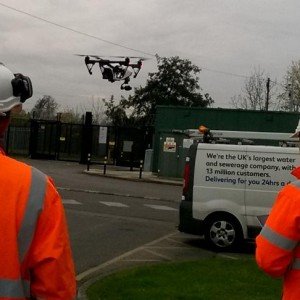opinion
‘Tech can improve health and safety – but the human touch will never be redundant’
Phil Jones, Managing Director at health & safety consultants, William Martin discusses the use of technology in the sector, but why human involvement is still key to the future of health and safety.

Phil Jones, Managing Director at William Martin
Technology has improved the speed and efficiency of almost everything around us – at home and at work – and health and safety compliance management is no different. There is no doubt that tech is transforming our sector in a hugely beneficial way.
But while tech can make our working lives easier, it’s crucial to also maintain the human touch – especially when it comes to understanding and analysing the root causes of compliance failings.
Tech that keeps people safer and helps them make the right decisions, without displacing them, has enormous potential.
Reducing the risks
The rapid evolution of automation, for example, presents the opportunity to reduce occupational risk to people, by allowing machines to carry out hazardous activities. And where human involvement is still needed, tech can better prepare staff to deal with and monitor hazards.
Drone technology can be used to access dangerous or remote areas, or situations that would involve working at height. Indeed, Thames Water has estimated that it saves around £1m a year – not to mention avoiding potential injuries – by using drones to inspect cranes, pressure vessels and storage tanks by streaming video to operators on the ground.
Technology can also reduce the risks associated with lone working, through smartphone apps that provide fast GPS services and welfare checks, or wearable panic alarms for those in high-risk situations. These devices give real-time information on the location and status of employees and provide a first response when in a dangerous environment.
 Then there’s environmental, health and safety (EHS) software. Over the past 20 years there has been a significant uptake of management platforms which can help with incident reporting and tracking, environmental auditing and inspections, corrective action tracking, and performance metrics.
Then there’s environmental, health and safety (EHS) software. Over the past 20 years there has been a significant uptake of management platforms which can help with incident reporting and tracking, environmental auditing and inspections, corrective action tracking, and performance metrics.
While no system is perfect, it is generally agreed that good EHS software reduces the scope for human error by helping to delegate more of the mundane or administrative responsibilities, which reduces the chances of risks being missed or reports being misfiled.
It also gives health and safety professionals more time to focus on the activities that will actually drive change in a business and ultimately reduce risk to tolerable levels.
While the adoption of safety tech is a no-brainer, there are limitations – and potential pitfalls – which mean it can’t be solely relied upon.
Sometimes the new software you’re considering may not match your existing processes, which will affect the efficiency and quality that the solution will deliver.
Software-based risk management systems may also lack the ability to evaluate complex and nuanced situations that require human judgment and experience. These limitations may lead to some risks being overlooked or not adequately addressed.
A ‘blended’ approach
Of course, resistance from your team, lack of training, or difficulties in navigating complex interfaces can hamper the adoption and effectiveness of any system.
And like any software, health and safety risk management systems are subject to technical issues, software bugs, or system downtime, all of which can hinder risk management processes and delay critical actions.
Another common pitfall is to assume software is comprehensive and foolproof, and become complacent in other areas. It is so important to supplement software solutions with regular human inspections, audits, and assessments.
 eLearning tech has done so much for health and safety training – it is accessible, cost effective, regularly updated, self-paced and customisable. But there’s a temptation for organisations to overuse eLearning for health and safety courses, just to allow them to tick the training compliance box as quickly and easily as possible.
eLearning tech has done so much for health and safety training – it is accessible, cost effective, regularly updated, self-paced and customisable. But there’s a temptation for organisations to overuse eLearning for health and safety courses, just to allow them to tick the training compliance box as quickly and easily as possible.
Inevitably, this ‘just get through it’ approach can cascade down to employees, leading to them remembering very little about their course if you ask them even a day later!
I personally find that the best outcomes often come from a ‘blended’ approach to delivering training, with the human element retained. And when it comes to health and safety, that holds true for most tasks involving technology – because people are still the most important part of any organisation.
For example, many companies talk about ‘safety culture’ when referring to the inclination of their employees to comply with rules or act safety or unsafely. And a successful safety culture normally comes from strong leadership, good worker involvement and clear communications – none of which can be provided by tech alone.
So what does the future hold?
Well, what we can see coming over the horizon is only the start; the construction sites, factories and transport depots of the future are likely to be very different places. New technologies will add a few of their own hazards as well as reducing exposure to many others. The occupational risks we are managing now became familiar through experience; so will the next ones.
As we look to the future, organisations should embrace the benefits technology can bring to make work safer and more efficient. But it’s vital to consider your existing work practices, listen to your people, and most importantly, always bring them with you – because you’re going to need their real-life experience, nuanced judgement, and empathy; all those things that make us human.
‘Tech can improve health and safety – but the human touch will never be redundant’
Phil Jones, Managing Director at health & safety consultants, William Martin discusses the use of technology in the sector, but why human involvement is still key to the future of health and safety.
Safety & Health Practitioner
SHP - Health and Safety News, Legislation, PPE, CPD and Resources Related Topics
Safety Leadership: From virtual safety to real safety
Drug and alcohol testing in a UK airport environment
New IOSH study centre aims to support Level 6 Diploma


 Then there’s environmental, health and safety (EHS) software. Over the past 20 years there has been a significant uptake of management platforms which can help with incident reporting and tracking, environmental auditing and inspections, corrective action tracking, and performance metrics.
Then there’s environmental, health and safety (EHS) software. Over the past 20 years there has been a significant uptake of management platforms which can help with incident reporting and tracking, environmental auditing and inspections, corrective action tracking, and performance metrics. eLearning tech has done so much for health and safety training – it is accessible, cost effective, regularly updated, self-paced and customisable. But there’s a temptation for organisations to overuse eLearning for health and safety courses, just to allow them to tick the training compliance box as quickly and easily as possible.
eLearning tech has done so much for health and safety training – it is accessible, cost effective, regularly updated, self-paced and customisable. But there’s a temptation for organisations to overuse eLearning for health and safety courses, just to allow them to tick the training compliance box as quickly and easily as possible.